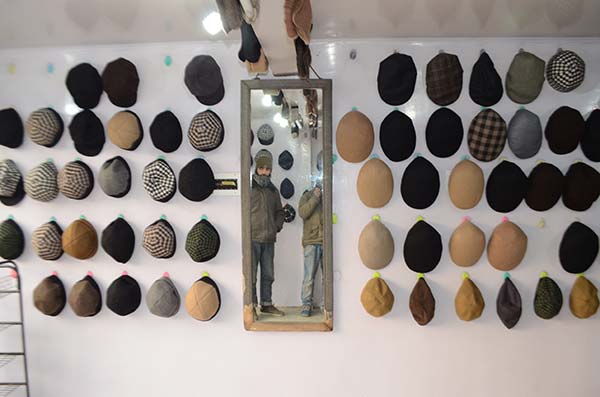Over the centuries, Kashmir has perfected the art of Hareesa-making and it is a key dish for the affluent in Srinagar. Mohammad Raafi meets the oldest in the profession to tell the story of what does low flame make of lamb shanks in freezing nights

Old City lanes giving headache and a serious cough almost every Friday because of tear-smoke overuse and chilli-grenades bursting have seemingly changed for the time being. Now, this maze of by-lanes emits mouth-watering aroma as steaming flavour rises up and change the complexion of the early morning chill. It induces and greatens hunger, literally!
It is winter and it is Hareesa time and the best addresses are in Shaher-e-Khas, with Ali Kadal as the reigning capital for centuries now. Unlike the ubiquitous Central Asian cuisine, this Kashmir peculiarity has Middle Eastern origins. It is such a huge hit that some traders halt their routine and convert their grocery outlets into Hareesa Tandoors for winter.
Families have now started cooking Hareesa at home but the best of it comes from traditional Harisagari’s, the Hareesa cooks. Made mostly with lamb shanks, this delicacy needs skimmed rice which is mixed with meat and spices, mostly garlic and fennel seeds. Harisagari’s cook the delicacy for the entire night in huge earthen vessels over simmering fires, stirring it with a wooden cane to ensure the broth does not stick to the vessel’s bottom.
And yet, for satisfied customers, the effort is worth it.
Zahoor Ahmad, 41 is at the centre of Srinagar’s Hareesa economy. A resident of Aali Kadal, Ahmad runs perhaps the oldest Hareesa shop. He is the third generation Harisagour. The pedigree shows when Zahoor handles the 36-inch wooden spoon and stuffs plates with the delicacy, puts boiling oil on it and creates a spectacle. As the hot oil sizzles, the aroma of Hareesa fills the shops. His small outlet is considered one of the best addresses for the delicacy and his clientele is huge.
“It needs a minimum of eight hours to make the best preparation and this is done during the night,” Zahoor says. “I usually sell 30 kgs of Hareesa daily.” A kilogram costs Rs 650.
Of late, the Hareesa makers have mushroomed in the city, a few in uptown as well. But Zahoor says it has not affected his business anyway.

“We are the oldest in the profession. People who have been buying Hareesa from us are with us for generations now. After all quality matters,” insists Zahoor as he serves a long line of youth who want to breakfast at his shop.
Buyers deposited tiffins and copper vessels in advance and drive to his shop during wee hours to take delicacy home. A number of families taste the delicacy at least twice a week.
Routine Hareesa-eaters offer an interesting explanation for its benefits. “If you have broken fast with Hareesa, it makes for a full meal for the entire day,” says Abdul Rashid, a customer, who eats once in a week and also takes home a tiffin full for the family. “It keeps you warm and gives the energy to brave the cold.” Normally, one should avoid consuming more than 500 grams in one serving, one day.
Hareesa costs are determined by the mutton rates. Last year, Hareesa would sell at Rs 550, a kg. “Because of increase in mutton prices we have added Rs 100 a kg now,” says Bashir Ahmad, a Naid Kadal Harisagour. “This is a seasonal business but the earnings are decent.” Bashir runs a grocery shop for the rest of the year.
Over the years, Hareesa has entered into the customs of the place. Bashir says affluent Kashmiri families send Hareesa to the in-laws of their newly-married daughters. “Normally, a well-to-do father sends anything between five to ten kgs to his daughter’s new home,” adds Zahoor. “The delicacy is put in a copper utensil and dressed with kebabs to make the dish more attractive.”
Hareesa has originated from the Middle East. But the Arab delicacy, interestingly, exists in most of the Muslim cultures. In a different form, it exists in Western countries. But what makes the difference is its use. In the Arab world, Harees is consumed during the Muslim month of fasting. But in the subcontinent, it is essentially a winter speciality. Experts say chevon, the goat meat, makes a better raw material for Hareesa than mutton but it is not much in vogue.
But in Kashmir, this delicacy is attributed to the Wazwaan-importers, the Mughals. Nonagenarian Muhammad Ishaq Gundroo, a resident of Ali Kadal, insists the dish was introduced by Mughals but Kashmir changed its cooking style immensely. Interestingly, Kashmiri Hareesa is very similar to Hyderabadi Haleem.

The delicacy is part of all the breakfast meetings that take place in Srinagar during winters. State’s own Tawaza (hospitality and protocol) department manages the cook within its facilities.
But what is interesting and least known is that Hareesa is still a Shehar-e-Khas dish. The peripheral town of Islamabad, Baramulla and others have not taken it seriously so far. Most of the village population has heard it but never tasted it.
But now, affluent in the periphery feel the hunger for it. Tasadduq Qureshi from Islamabad would never touch Hareesa. For the last couple of years of his stay in Srinagar has made him a Hareesa-admirer.
Last year Qureshi said he took a pot to his parents back home. “First, they scolded me for wasting the money and when I took the next time, they relished it,” Qureshi said. “Now they are demanding it.”















